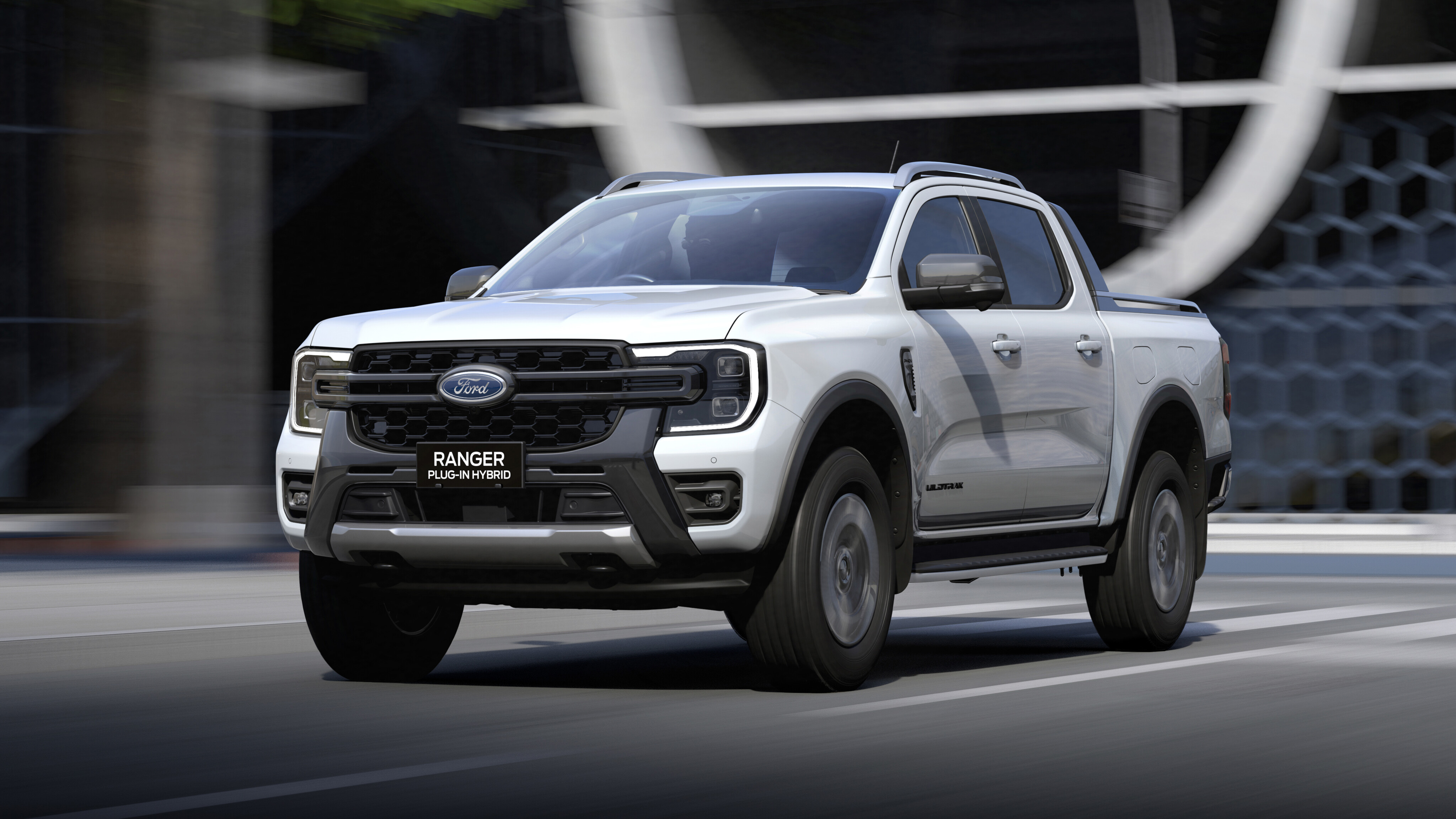
The Ranger PHEV is slated to join Ford’s Aussie line-up in 2025!
Ford has already confirmed the plug-in hybrid will be built in South Africa from late 2024. It will be powered by a 2.3-litre turbo-petrol four-cylinder motor and a single electric motor. It will have a driving range of 45km in full-electric mode, and its 3500kg towing capacity will be retained.
The Ranger PHEV made its global debut on September 16, 2024. Here's everything we know so far 👇
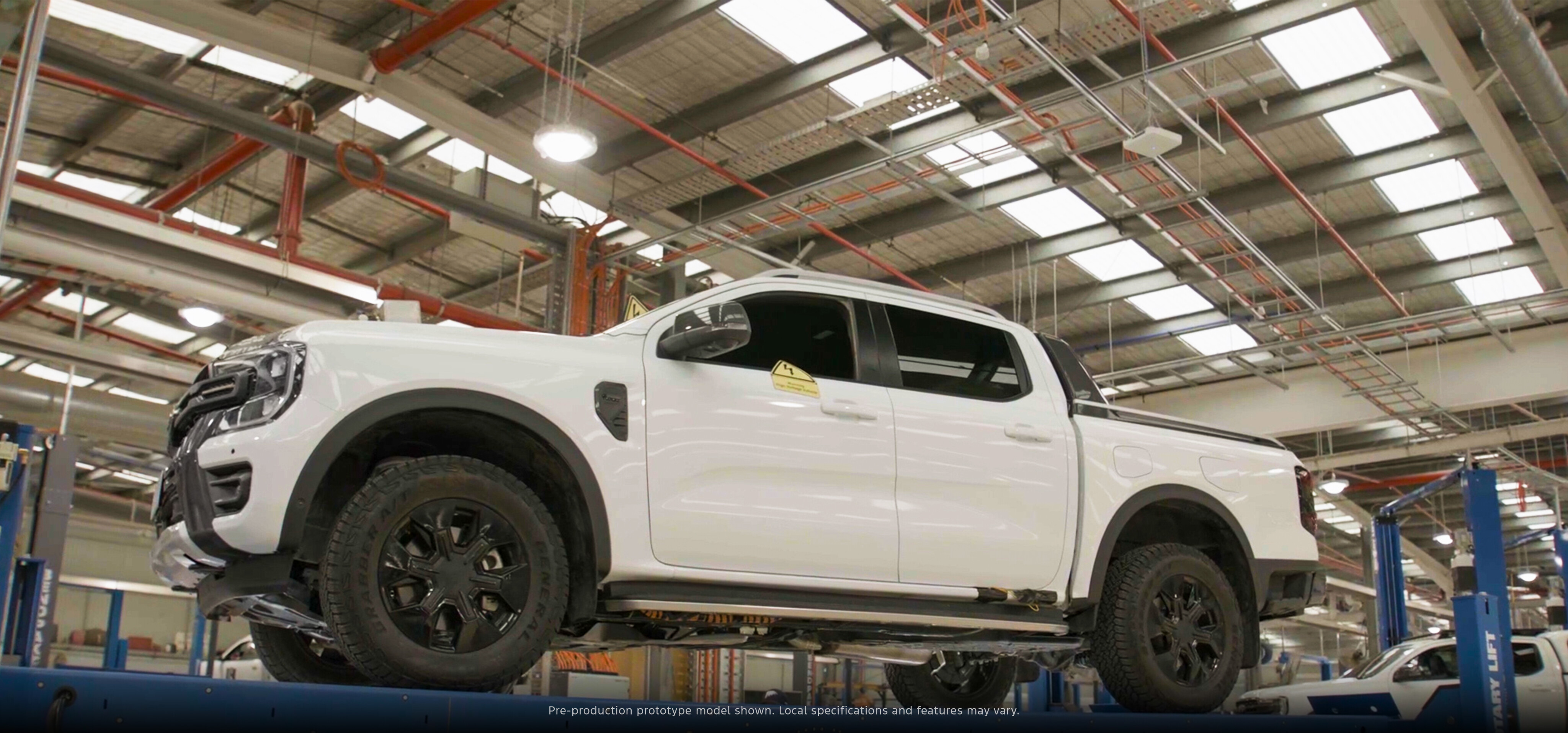
JUMP AHEAD
- November 2024: Set to offer ability Australians expect
- October 2024: On display for the first time in Australia, at Mobility Live
- September 2024: Ranger PHEV makes global debut; Stormtrak launch edition announced
- September 2024: Australian development reaches major milestone
- April 2024: Ranger PHEV spotted at Bunnings
- November 2023: Ranger PHEV to be built in South Africa
- September 2023: SPEC BATTLE: Ranger PHEV vs Ranger Wildtrak
- September 2023: Ranger PHEV confirmed!
- How big is the Ranger PHEV’s battery?
- How much will the Ranger PHEV cost?
- Can it still tow? And what about payload?
- September 2023: Will an Everest PHEV follow?
November 2024: Set to offer ability Australians expect
According to recent survey by Ford Motor Company, 47 per cent of respondents told the manufacturer they were looking for something with off-road capability from their EV purchase.
60 per cent also said they’d be more likely to buy one if it offers real towing ability. Conveniently, Ford says it has the vehicle for them arriving soon!
October 2024: On display for the first time in Australia, at Mobility Live
Ford will showcase its Ranger PHEV in public for the first time in Australia, at the 2024 Mobility Live event.
Held at the Melbourne Convention and Exhibition Centre on October 30 and 31, the free event allows governments and fleets an opportunity to take a closer look at the future of electric commercial vehicles.
September 2024: Ranger PHEV makes global debut & Stormtrak launch edition announced
Ford has officially debuted its Ranger PHEV, with customer deliveries of the plug-in hybrid expected to roll out in 2025.
The PHEV powertrain will be available for Wildtrak, Sport and XLT variants within the Ranger line-up – as well as an all-new exclusively-styled Stormtrak launch edition.
September 2024: Australian development reaches major milestone
The 1000th Ford Ranger PHEV has departed Ford Australia’s local assembly facility in Campbellfield, Melbourne, marking a significant milestone for the Blue Oval brand.
April 2024: Ranger PHEV spotted at Bunnings
The first PHEV Ranger has been spied in public, well before its official release.
November 2023: Ranger PHEV to be built in South Africa, cop import tariff
The Ford Ranger plug-in hybrid ute will be built in South Africa from late 2024, the brand has confirmed.
September 2023: SPEC BATTLE! Ranger PHEV vs 2023 Ranger Wildtrak
How does the plug-in Ranger stack up for specifications and features against a diesel-powered equivalent?
September 2023: Ranger plug-in hybrid confirmed
Australia’s most popular 4X4 dual-cab will soon be available as a plug-in hybrid, with the Ford Ranger PHEV set to join the Aussie line-up in early 2025.
Powered by a 2.3-turbo petrol motor and a single electric motor, Ford says the Ranger PHEV will have the most torque of any Ranger model and can drive up to 45km on electricity alone.
It will also retain the Ranger’s 3500kg braked towing capacity and can power tools and other accessories through three dedicated 240-volt/10-amp power outlets (two in the tray, one in the cabin). This feature, which Ford calls ‘Pro Power Onboard’, effectively turns the Ranger PHEV into a drivable generator and can be used for most high-draw tools and appliances.
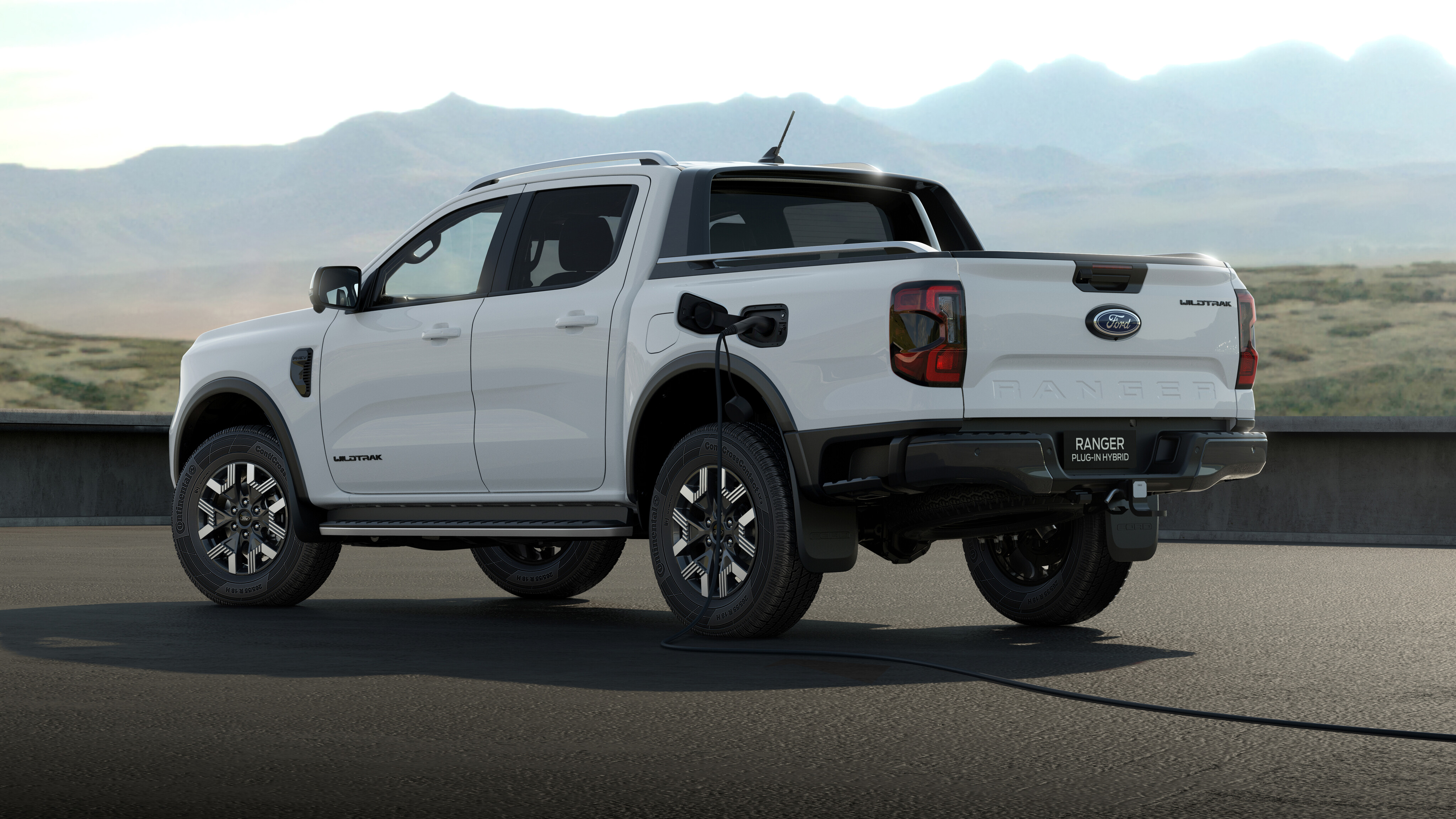
“You’ll be able to power a wide variety of equipment from power tools like circular saws, compressors and drills to consumer electronics like TVs, stereos, refrigerators and lighting systems,” said Rob Sharples, chief engineer for Ranger PHEV.
“So think of it really as just having an onboard generator that uses power supplied by the battery to allow customers to leave their petrol power generators at home.”
The Ranger PHEV completes Ford’s promise to offer five electrified models in Australia by the end of 2024, joining the Mustang Mach E, the E-Transit van, E-Transit Custom van and the Puma EV small SUV.
How big is the Ranger PHEV’s battery?
We don’t know yet. In fact, there’s a lot of technical information about the Ranger PHEV that Ford is yet to release, including its official fuel economy rating, kerb weight, power/torque outputs and battery capacity.
Charging times and maximum charging rates are also yet to be disclosed. What we can see from Ford’s images is that the battery pack is located beneath the tray and it seems to be a decent size. It’s understood this powertrain is all new and isn’t used elsewhere in Ford’s global lineup, so any guesses around battery capacity or performance outputs are exactly that: guesses.
There are some known figures we can work with, however. The 2.3-litre Ecoboost four-cylinder petrol, for example, makes 222kW/452Nm in the Volkswagen Amarok which was co-developed with Ranger.
That’s before an electric motor is added so you can expect the PHEV’s combined outputs to be much healthier than that. And Ford’s claim that the PHEV will have more torque than any other Ranger means we can expect more than 600Nm, which is the current maximum of the Ranger’s 3.0-litre turbo diesel engine. Ford did confirm the Ranger PHEV is a parallel hybrid and that drive from the e-motor is sent through the gearbox, meaning 4X4 capability is available in electric mode.
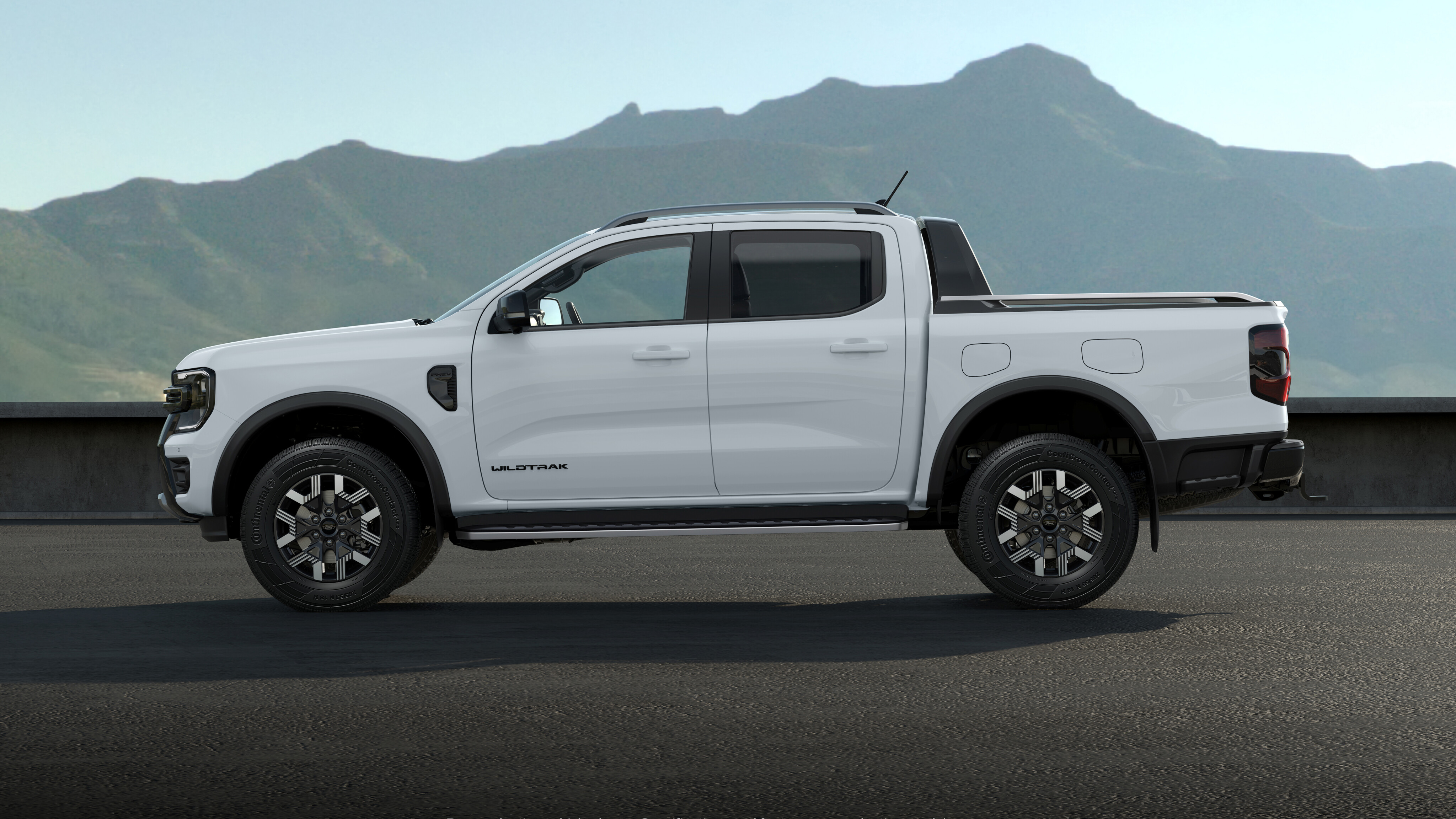
Speaking of modes, the Ranger PHEV has four additional modes to go with the Ranger’s existing Drive Select system: EV auto is the default mode and juggles the electric/combustion power, EV Now is electric power only, EV Later retains the current state of battery charge, and EV Charge uses the 2.3-litre engine to top up the battery to ensure you have enough juice to power your worksite or camping adventure.
Regenerative braking is also used to feed energy back into the Ranger PHEV’s battery and Ford has confirmed each vehicle comes with a 7.0 metre AC charging cable. As for the Ranger PHEV’s EV range, Wheels understands that “in excess of 45km” is a conservative estimate before the official number is validated. Other PHEVs on the market offer 85km of EV range from a 20kWh battery for example. Even if 45km is the official EV range, Ford is confident the Ranger PHEV will fulfil owner’s requirements.
“We know from our connected vehicle data that around half of our Ranger customers will often travel less than 40km in a day and 83 per cent often take three or more short trips in a day,” said Matt Reilly, Ford’s Global Truck chief strategist. “For these use cases, they could spend a considerable amount of their time using the vehicle as an EV with the flexibility to utilise hybrid mode for longer trips or heavy towing.”
How much will the Ranger PHEV cost?
Ford is remaining tight lipped on pricing, with company boss Andrew Birkic saying simply “We won’t be discussing pricing today. We’ll reveal that at a later date.”
It’s also unclear what variants Ford will offer the PHEV powertrain in, although Birkic did confirm it won’t be available across the entire line-up. Offering the PHEV as a high-spec model is likely, and Ford’s supplied images show the Ranger PHEV in Wildtrak trim.
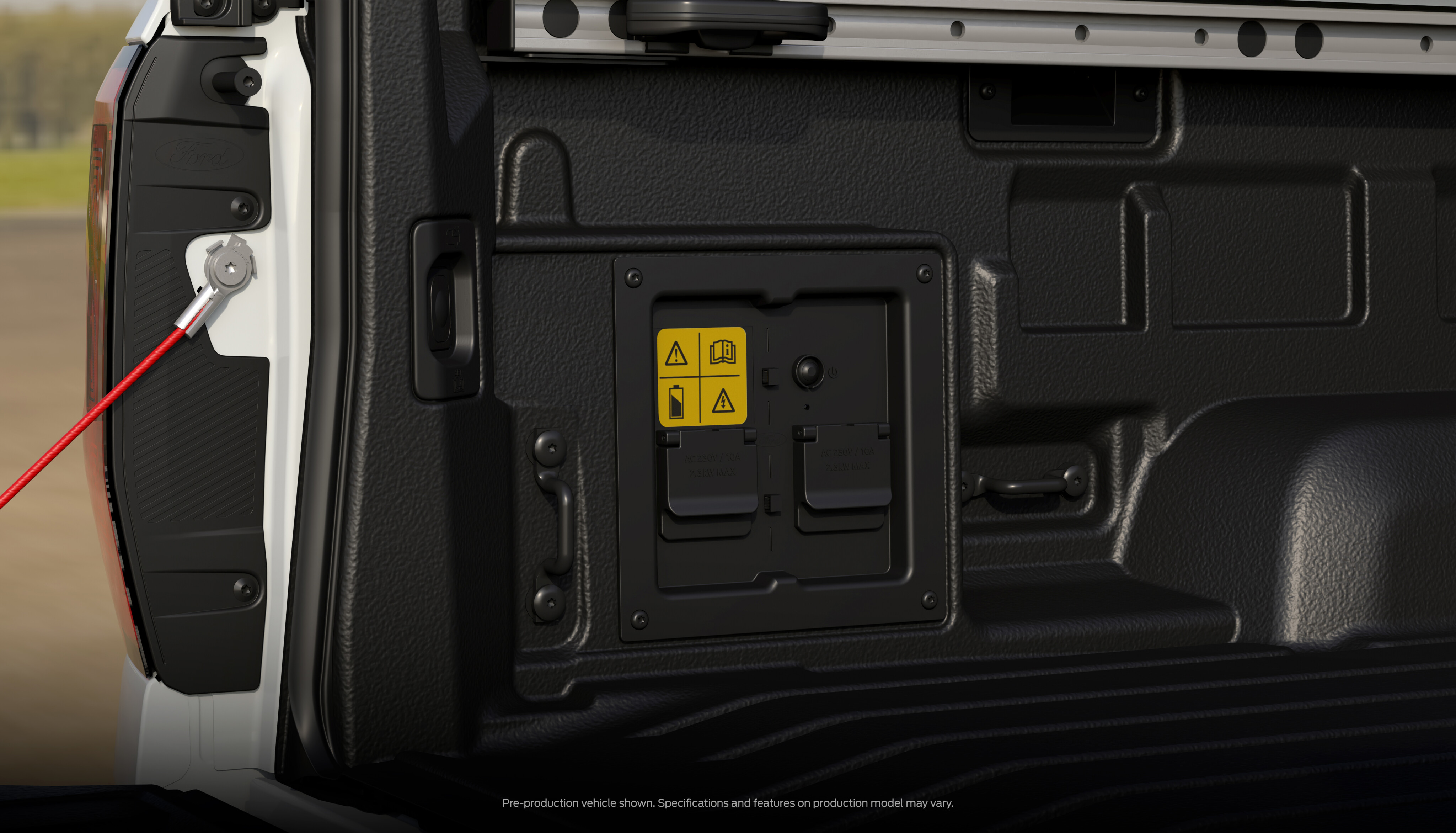
Typically a plug-in hybrid can cost between $10,000-$20,000 more than a petrol equivalent, meaning the Ranger Wildtrak PHEV could start between $82,000-$90,000.
Another factor that will impact the Ranger PHEV’s price is where it’s built. Ford Australia produces its Rangers in Thailand, which has a free-trade agreement with Australia, but that factory currently doesn’t product any petrol-powered models.
That means the 2.3-litre PHEV will likely need to be sourced from South Africa – the same factory that builds the Amarok – and carry a five per cent import tariff.
Can it still tow? And what about payload?
The Ford Ranger PHEV has the same 3500kg braked towing capacity as the rest of the combustion-powered range. It should also be just as capable off-road, despite the extra weight of its large battery pack and e-motor.
“It’s got Ranger’s renowned capability off-road with its selected drive modes, four-wheel drive and the same water wading capability,” said chief engineer, Rob Sharples.
It is worth noting, though, that the PHEV’s 3500kg braked towing capacity won’t be available in all drive modes. Ford confirmed the Ranger PHEV will not tow 3500kg in EV mode, for example.

Payload is another key metric Ford didn’t want to compromise and Ford has confirmed the PHEV has the same payload capacity as combustion-powered models. Heavy-duty suspension has been fitted to PHEV models to offset the battery pack’s additional heft.
“No, there's no lessening of the payload or the towing capability versus what we have on today's lineup,” confirmed Sharples.
Ford has also fitted the PHEV’s ladder frame with additional bracing and retuned the steering and engine calibration to help retain the Ranger’s class-leading driving dynamics. As with regular Ranger, Ford Australia has taken the lead on the PHEV’s engineering and development with all of the physical testing taking place on Victorian roads.
Another crucial element worth mentioning is tub size. It’s understood the PHEV’s tub dimensions will be slightly different to diesel models, but the differences will be minor and a Euro pallet will still fit between the wheel arches.

COMMENTS